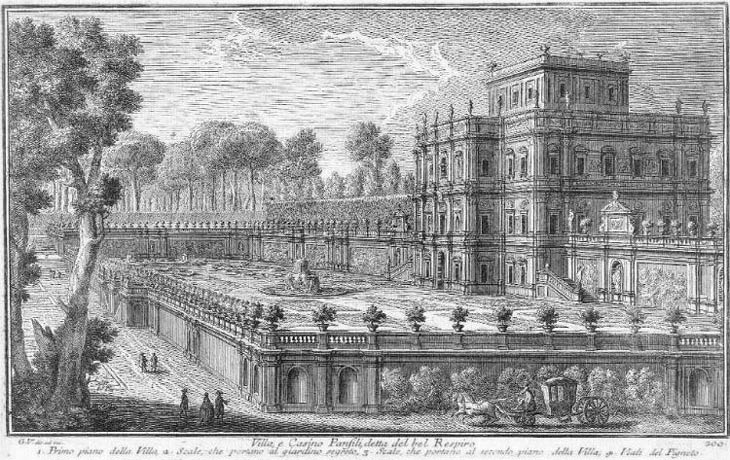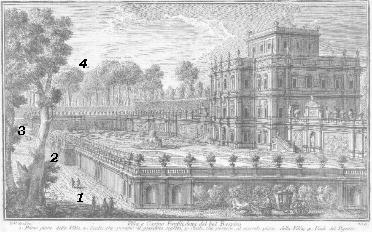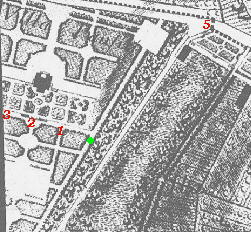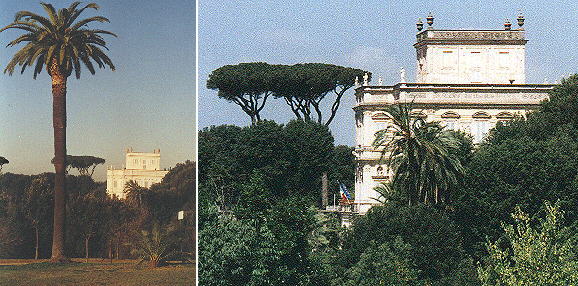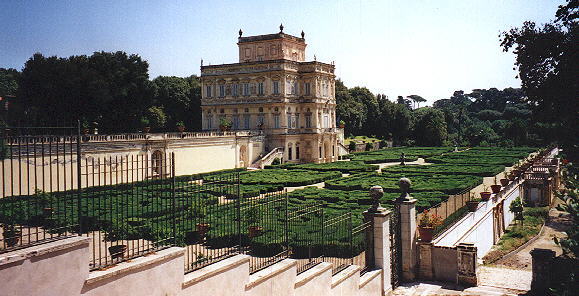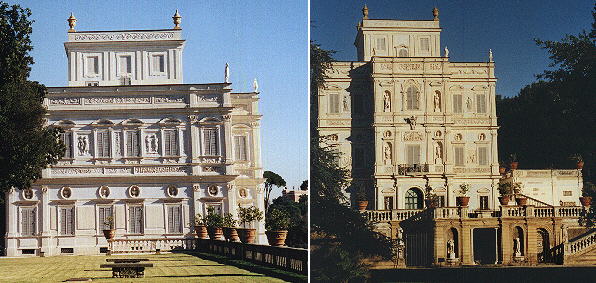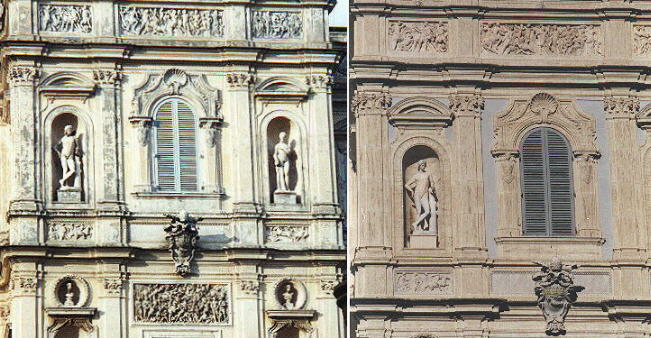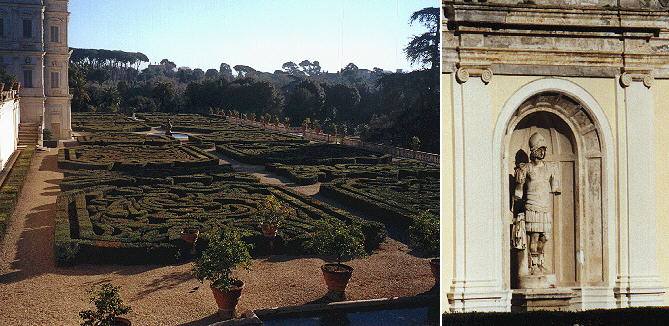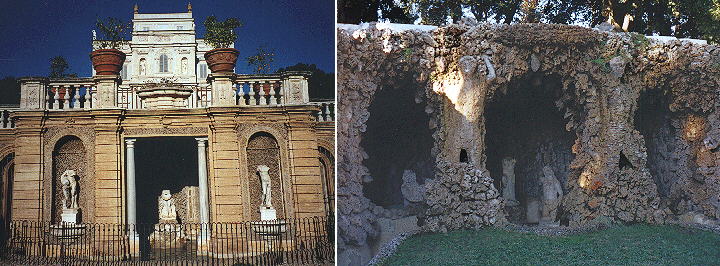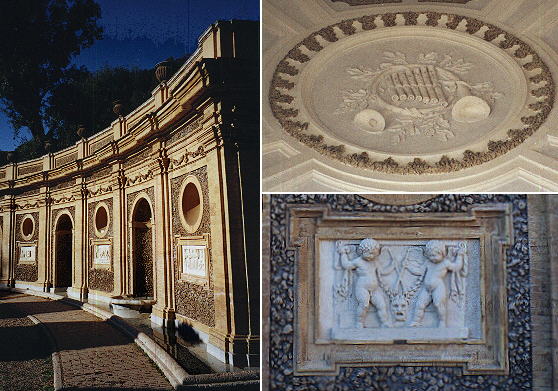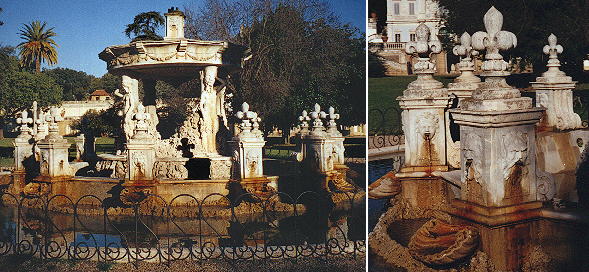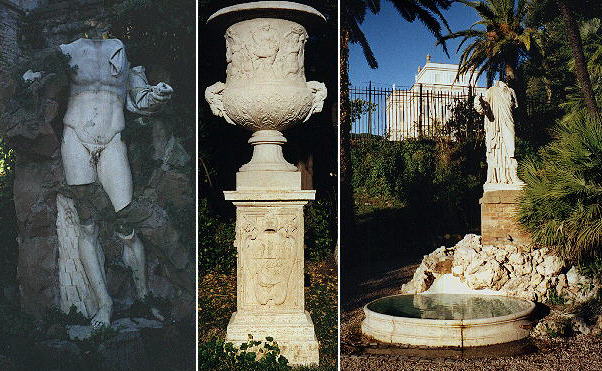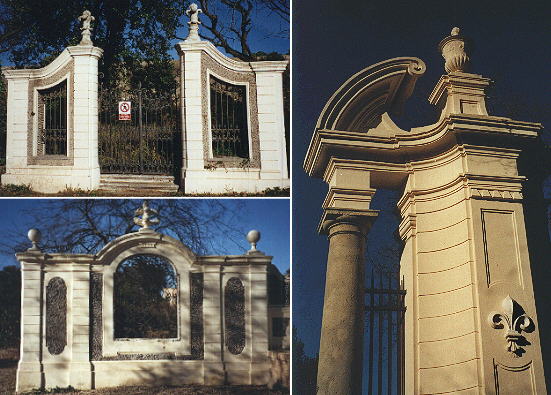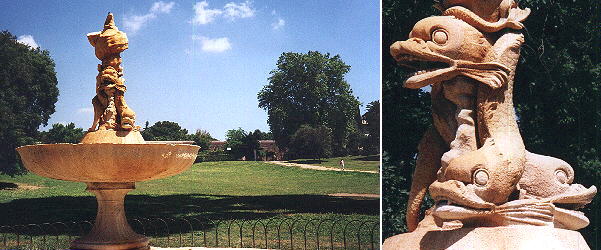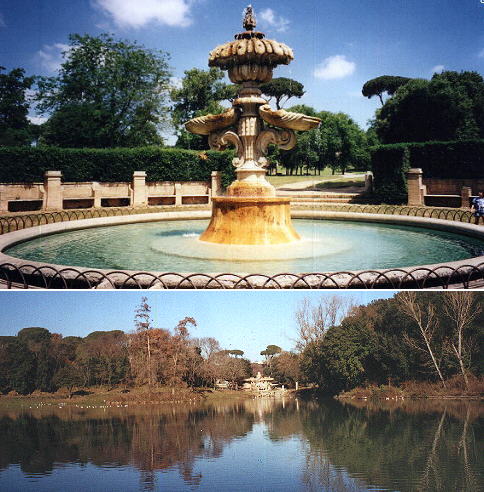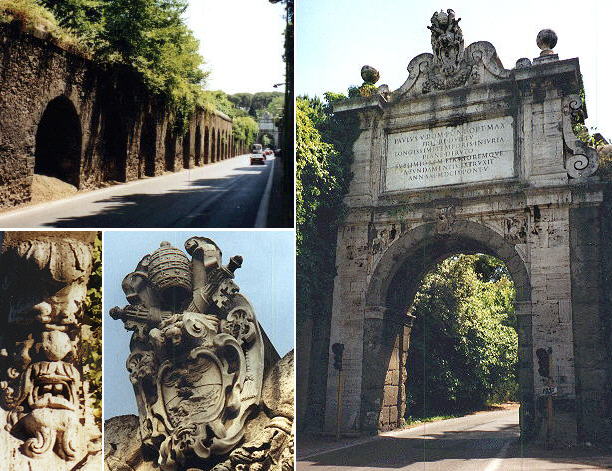  Villa e Casino Panfili, detta del Bel Respiro (Book 10) (Day 6) In this page:
With this plate Vasi comes to the end of his work and he chooses
for this the largest Villa of Rome, Villa Panfili or Villa del Bel Respiro,
because of the fresh air one could breathe (respiro=breath) there
owing to the western winds and the pine trees. The view is taken from the green dot in the small 1748 map here below.
In the description below the plate Vasi made reference to: 1) Lower floor of the Villa;
2) Steps leading to the hidden garden; 3) Steps leading to the upper floor of the Villa; 4) Pinetum (plantation of pines).
The small map does not show 4) Pinetum, but it shows 5) Arch of Acqua Paola.
The view from the east is limited because of the trees, so to see
the secret garden in front of the Casino, one has to move to the western side.
The Casino was built in 1644-52 by Alessandro Algardi at the expense of Prince
Camillo Panfili, nephew of Pope Innocentius X (coat of arms on the fašade). The Prince had at first
requested Francesco Borromini to design it, but the excessively innovative ideas of Borromini did not satisfy him,
so he commissioned the Casino to Alessandro Algardi, who had a great reputation as a sculptor, but a limited
experience as an architect. After long discussions with the Prince, Algardi designed a traditional palace with a very rich
decoration, very similar to that of Villa Borghese. In Algardi's plans, the
Casino had two wings embracing the garden. The Casino is called after Algardi to distinguish it
from Villa Vecchia (the old villa), an existing building which was largely modified in the XVIIIth century
(in my background a Panfili dove from the ceiling of Villa Vecchia).
Villa Panfili (or Doria - Panfili as it became known after the death in 1740 of Donna Anna, the last Panfili who had married Giovanni Andrea Doria) was acquired by the Italian Government in the 1950s. The park is open to the public, while the Casino is used by the Prime Minister for official meetings. The building was recently repainted in the "sky" color which was very common in the XVIIIth century. One of the reasons for the high number of sculptures and reliefs is due to the fact that several Roman tombs had been found in the area of the Villa which is immediately outside Porta S. Pancrazio, the starting point of Via Aurelia. In addition Algardi had many assistants and was in a position to provide the statues and reliefs necessary to complete the decoration.
The secret garden is embellished in a very classical way. Algardi was the leader of the "classical" school which regarded Borromini and to some extent Bernini as unorthodox and bizarre artists. Fountains
The Casino was used only in summer when the weather made staying outside pleasant. To this purpose Algardi designed a large open air theatre decorated with reliefs and busts. The decoration includes a syrinx (a Pan-pipe) which shows how the shepherds' life was regarded as an idyllic world.
At the center of the terrace Algardi designed a large fountain based on the fleur-de-lys, one of the heraldic symbol of the Panfili family.
In the Gardens
The park was split in several parts closed by railings and gates. The Panfili had
so many palaces that they had a permanent position for an architect. The fine gates below were designed
by Gabriele Valvassori in 1732.
Also in the park one comes across several interesting fountains. Here below Fontana della Lumaca by Bernini with the recurring motif of the shell and the dolphins.
Gabriele Valvassori designed an artificial waterfall originating from Fontana del Giglio, a fountain sculpted by Algardi for the terrace in front of the Casino. The water ends in a little pond.
On the Farm The western part of the Villa was used as a farm and instead of fountains, one finds watering-places for animals. This part had an independent entrance with a fine coat of arms of Innocentius X.
Arch of Acqua Paola
The northern wall of the park is in part made by the arches of an
old Roman aqueduct which Paulus V rebuilt to bring water to the hills on
the right bank (Acqua Paola). At the point where
the aqueduct crosses Via Aurelia Antica a large arch was built, which looks
like another of the gates of Rome.
VIVETE FELICI! Next step in Day 6 itinerary: Monastero di S. Maria dei Sette Dolori
Go
to |
All images © 1999 - 2003 by Roberto Piperno. Write to romapip@quipo.it
